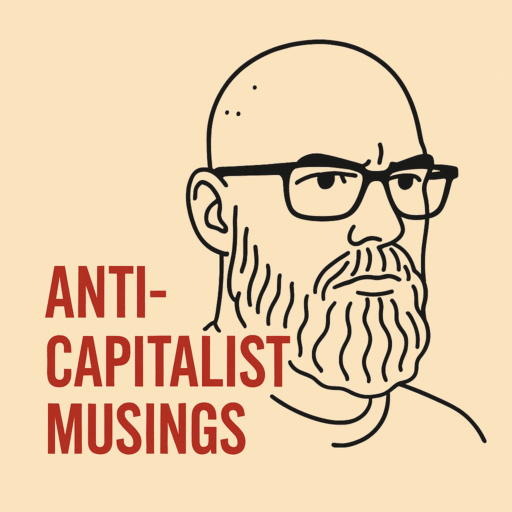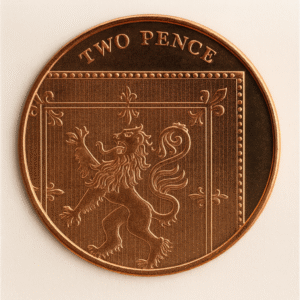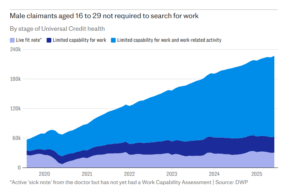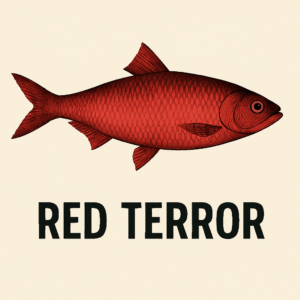It’s hard to say where the theatre ends and the killing begins. Since returning to power, Trump has governed less like a president and more like a hall-of-mirrors demagogue: a man whose authority is generated not through policy or persuasion but through saturation. His image is everywhere and always. The mugshots, rallies, rants from the podium, the frozen gesture of the salute, the flexed jowls of grievance and greatness. This is not new. But under Trump 2.0, it has metastasised. The spectacle no longer disguises power; it is power. And if it feels like we’ve seen this before, it’s because we have. Twice, in fact. First in Society of the Spectacle (1967), then in Simulacra and Simulation (1981). Debord sketched the scene of the crime. Baudrillard turned up just in time to sign the death certificate.
Guy Debord’s great insight was to locate the central mechanism of modern capitalism not in the factory or the bank, but in the image. Under the spectacle, life is no longer lived. It is represented. Real experience gives way to appearance; social relations are mediated not by lived activity, but by screens, signs, and commodities. What appears is good; what is good appears. For Debord, this is not simply distraction, but domination. The commodity becomes total. It colonises culture, leisure, desire, even resistance. The result is a world where “everything that was directly lived has moved away into a representation.” Crucially, it’s not that the representation lies about reality. It replaces it. We live not in a democracy but in its image. Not in a world of decisions, but of signals.
Trumpism is tailor-made for this terrain. There are no policy platforms, only postures. No ideological coherence, only affect. Immigration raids are not logistical operations; they’re episodes. The border wall was never meant to be completed. Only filmed. In his first term, Trump used the institutions of the American state as props. In his second, he uses them as amplification chambers. The mugshot becomes merchandise. The motorcade becomes myth. The failed assassination becomes a holy wound. The body politic, such as it remains, is less a citizenry than an audience. Spectacle, as Debord warned, has become the organising principle of society, and Trump its most fluent performer.
This mode of rule didn’t begin with Trump. Ronald Reagan, the B-movie cowboy turned Cold War Warrior, pioneered the convergence of statecraft and screencraft. Berlusconi ran Italy like a glossy tabloid with bunga bunga parties. Boris Johnson governed via staged bumbling and calculated incoherence. These figures all blurred entertainment and authority. Trump simply perfected the form. Where others fumbled ideology, he substituted it entirely with symbol. He is not selling a programme but a mood: nostalgic, wounded, vengeful, divine.
But even Debord’s concept begins to crack under the weight of Trump 2.0. That’s where Baudrillard steps in, with a colder, more disturbing proposition. If Debord showed us a world of appearances replacing the real, Baudrillard argued that the real itself had disappeared. There is no hidden truth beneath the image. No economic base waiting to be rediscovered, no authentic politics to reclaim. There are only simulacra: signs that refer to other signs, a world of perpetual substitution with no origin. Disneyland is more real than the city it pretends to mask. The Gulf War, he famously claimed, did not take place. It was produced. Reality is no longer obscured. It is simulated.
Trump does not distort the truth. He produces reality effects. He says it, therefore it was. The election was stolen. The deep state controls everything. The man with the gun wasn’t a political extremist. He was part of the plot. These are not lies to be disproven. They are hyperrealities, constructed not from evidence but from repetition and resonance. Trump is not a president. He is a sign of the president. Floating, memeified, untethered from policy, function, or responsibility. He exists to be seen, shared, and believed. He is, in Baudrillard’s sense, a pure simulacrum: the sign of authority without its substance.
Even resistance is consumed. The liberal opposition plays its part. Outrage becomes currency. Criticism becomes content. Trump’s enemies denounce him in the language of the spectacle, and thus become part of it. There is no outside. Protest becomes theatre. Dissent is monetised. The logic is total.
Perhaps that’s the trap: to believe that what we’re watching is only image. That’s the liberal mistake. To treat Trumpism as a media event, an embarrassment, a show to be fact-checked into oblivion. That underplays what Marxists have always insisted: there is no spectacle without structure. Beneath the memes and martyrdom lies an unbroken continuity of class rule. The tax cuts go through. The union-busting continues. The oil flows. The arrests mount.
The spectacle mystifies, yes, but mystifies something. As Debord knew, the performance still sits atop a real and violent base: the capitalist state, the carceral apparatus, the militarised border. The global police state. Trump didn’t create this system. He simply narrates it better. Under Trump 2.0, ICE raids are livestreamed for likes. Deportations become campaign fodder. The courts are packed not just to serve capital, but to look like they’re serving justice. Behind the image is expropriation. Behind the flag is the landlord.
Still, something material persists. People still work. Still suffer. Still die crossing borders or in prison cells while the pageantry unfolds. Some are snatched off the streets by ICE, bundled into unmarked vans as part of a spectacle of enforcement. The risk of overstating Baudrillard is that we forget the state still kills, and often prefers the showy means of doing so. The logic of the spectacle does not end the violence; it renders it natural. Ordinary. Streamed. Then forgotten.
Mark Fisher, writing in the shadow of Blair and branding, knew this too. For Fisher, capitalist realism wasn’t just economic, it was ontological. The collapse of belief in political alternatives had become so complete that even imagining change felt kitsch. “It is easier to imagine the end of the world,” he wrote, “than the end of capitalism.” Fisher sits somewhere between Debord and Baudrillard: aware of the spectacle, but more concerned with the psychic infrastructure it builds. Trump’s movement is what happens when that exhaustion turns ecstatic. When the death of hope is replaced by the joy of domination. Not just a spectacle, but a feeling. Not just a show, but a ritual.
The ritual has now deepened. The failed assassination didn’t destabilise the movement. It sacralised it. The bullet didn’t just miss; it made him holy. The contradictions of 2016 (the incoherence, the conman aura, the carnival populism) are gone. What remains is mood, myth, martyrdom. Trump bled in public, and now the faithful call it a sign. This isn’t politics. It’s scripture.
What comes next may not even require a body at all. In a world where the real is no longer required to legitimate power, where truth and fiction are not opposites but interchangeable skins, the next Trump could be an avatar. An eternal rerun. A deepfake presidency administered by algorithms and enforced by ICE. The post-body sovereign. The brand without expiry.
The screen will stay on.




